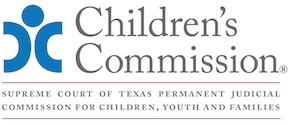A. What is Community-Based Care?
In 2017, DFPS started implementing Community-Based Care, also referred to as CBC, in certain geographic areas in the state known as “catchment” or “community” areas. CBC is intended to delegate or outsource certain activities and decisions about foster care delivery and case management, and it is implemented with measurable goals related to these decisions. CBC is designed to be implemented in stages. Stage I of CBC involves a Single Source Continuum Contractor (SSCC) handling the responsibility of finding safe, high-quality, nearby homes for children in paid foster care in the designated community area. Stage II is when the SSCC assumes responsibility for case management duties, including serving as the witness in the legal proceeding and assuming court-related responsibilities and authority in terms of the permanency plan and goals and how those will be carried out. Stage III begins at least 18 months after the contractor initiates providing case management to all children and families in the community area. In this stage, DFPS can assess the contractor fiscal incentives and remedies for outcomes related to performance, including permanency outcomes. At each stage of CBC, the readiness of the provider to successfully partner with all stakeholders and to serve the children and families in its community area is critical to the success of the roll out.
